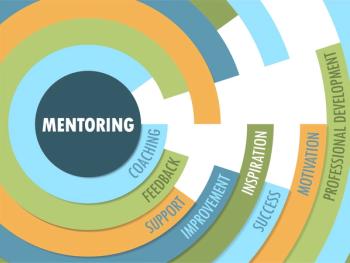
- Psychiatric Times Vol 35, Issue 12
- Volume 35
- Issue 12
Giving Thanks for These Psychiatrists
As we approach the end of the year, our collection of eulogies remind us of life's fragile nature.
IN MEMORIAM
Dr Moffic is an editorial board member and regular contributor to Psychiatric Times. He was a tenured Professor at the Medical College of Wisconsin. Currently, Dr Moffic is focused on three major advocacy initiatives: physician burnout, climate change, and Islamophobia. In 2002, he received the one-time designation of being a Hero of Public Psychiatry from the Speaker of the APA Assembly; he received the intermittently bestowed Administrative Psychiatry Award from the APA in 2016.
Usually, we do a series of year-end eulogies at Psychiatric Times. This year I sat down to write this a little earlier, just as we were approaching the Thanksgiving holiday. Why? Not only have we seen a large number of losses this year, but the most recent passing shook me to my core and offered a rare public example of a major challenge facing our profession.
Suicide: Alvaro Camacho, MD, MPH
Quarterly, the American Psychiatric Association posts an In Memoriam list of members who have died. The most recent one was shared on October 31st, which ironically begins the Hispanic Day of the Dead celebrations. While Halloween may be a holiday of trick and treats, the Day of the Dead remembers, honors, and celebrates ancestors no longer with us.
As I perused this list, I was surprised to see the name of Dr Camacho. Having presented with him on panels at APA meetings in recent years, I knew he was young, so I wondered (with some dread), what caused this seemingly premature death.
In searching for his obituary and contacting colleagues in community psychiatry, it quickly became clear that this was a suicide. After his death on September 23rd, the news was conveyed publicly, both in his local newspaper as well as at the beginning of the annual APA Psychiatric Services meeting in early October.
I questioned whether to include him in these eulogies. On the one hand, could it be done in such a way to protect whatever privacy remained? On the other hand, his death is an example of a major challenge for psychiatrists and other physicians-that is, our rate of suicide is higher than the rates for other professions.1 That high suicide rate correlates with our reluctance to self-disclose our psychological problems. I have been part of discussing this challenge at several APA meetings and as a member of the APA Work Group on Psychiatrist Burnout and Wellness. We have the terrible paradox of knowing the most about suicide and how to prevent it in our patients, yet we seem the least successful in preventing suicide among ourselves.
It is not known whether Dr Camacho disclosed the issues that led to his suicide, whether to family, friends, and/or colleagues. So, there is not much more for me to express other than regret for his loss, professionally and personally.
He was a leader in integrated care, an immigrant advocate, a rural community psychiatrist, a role model for Hispanic psychiatrists and a musician, among other things. Ironically, I am quite sure he helped to prevent suicide by many others. I will try to remember his professional ancestry around this time of year. As we say in my Jewish tradition upon a death:
“May your life be a blessing.”
Homicide: Steven E. Pitt, DO
There are two outcomes that every psychiatrist dreads-suicide and homicide. Both, whether in patients or in ourselves, not only result in death but also the end of potential help. This year one of our own was a victim of homicide, which thankfully is rare for our profession.
Dr Pitt was a nationally known forensic psychiatrist based in the Phoenix area. He advised on such high-profile cases as that of JonBenét Ramsey, the Columbine High School massacre, and other homicides. Paradoxically, he, too, was a victim of a risk that he understood so well.2
Dr Pitt was shot outside his office on May 31, 2018. He allegedly had evaluated his killer for domestic assault in the past. The perpetrator died by suicide a few days after killing Dr Pitt and others involved in his divorce.
Dr Pitt’s Jewish and Michigan roots were honored at his funeral. Rabbi Harold Loss flew in from his home state of Michigan to conduct the funeral service. He concluded by saying Dr Pitt “would want you to remember his life with joy.”
Accidental Death: Diana J. Lampsa, MD
Sometimes the unexplainable happens, and even psychiatrists are not immune to accidents. Dr Lampsa died in a car crash in Chicago on June 20. She was a passenger in a taxi when a stolen SUV crashed into it while fleeing from police. She was a well-known psychiatrist in my home state of Wisconsin. I knew her fairly well; we shared a mutual concern about managed care.3 She served as a member of the Wisconsin Psychiatric Association Executive Council and had her own psychiatric center in Manitowac.
Most notably, she used humor and music to educate the public about our obstacles in providing the best treatment. An example is the song she wrote called Suicide Is Cheaper, after a patient complained about her insurance not paying for treatment. The macabre chorus lines reads:
“Now if you’re gonna get sick it better not be in your head. In case you’re feelin’ low, some folks rather see you dead.”
Dr Lampsa was a devoted Christian and loved angels. Many who knew her would say that she herself was an angel.
Leadership for the Underserved: Marcia Kraft Goin, MD, PhD
Dr Goin represents a long life, well-lived. She died on April 26, 2018, at the age of 85 from cancer.
I first met Dr Goin when I was an intern at the University of Southern California in 1971-1972. During my psychiatric rotation, she was a caring and supportive educator. In talking, we learned we had both attended the same medical school at Yale.
Over time she became an educational leader, sharing lessons in teaching psychotherapy; she also focused on the poor, who she recognized often did not receive individual psychotherapy.4
Given her warmth and expertise, it was no surprise that she became one of the first women leaders of psychiatry, becoming president of the American Psychiatric Association and the Group for the Advancement of Psychiatry, where once again she helped me find my way.
Anthropology and Psychiatry: Edward Francis Foulks, MD, PhD
Another well-lived life is that of Dr Foulks, who died on September 1, 2018, of a blood disorder at the age of 81. Early in my career, I developed an interest in cultural psychiatry at Baylor because my community mental health clinic had so many Hispanic and African American patients. Besides benefitting from our own faculty anthropologist, I could not help but be drawn to the Society for the Study of Psychiatry and Culture, which he co-founded. The organization incorporated his rare combination of psychiatry, anthropology, and psychoanalysis.5 He also led numerous organizations in New Orleans and Louisiana.
Dr Foulks lived in the French Quarter of New Orleans. He volunteered at many festivals and assisted citizen groups, including the Catholic Cultural Heritage Center. Although he received numerous awards in psychiatry, I wonder if his favorite honor was being designated a Minister of Hospitality in New Orleans. I, for one, experienced first-hand his hospitality and respect for others in cross-cultural psychiatry.
An Assertive Community Psychiatrist: Leonard Irving Stein, MD
Being a long-time community psychiatrist, I know that community psychiatry is renowned more for service than for research. Dr Stein was a notable exception.
Psychiatry never had much of a history of home visits until Dr Stein discovered a way to make that work for the most seriously mentally ill, who tended to miss clinic appointments. This approach developed into team visits in what came to be known as Assertive Community Treatment (ACT). This advanced psychiatry and mental health treatment further than the deinstitutionalization of formerly long-term hospitalized patients that placed them back into the community. His vision was never imagined in the original federal funding for community mental health in the sixties. His innovation was meticulously researched and replicated successfully around the world.6
I recall one story that inspired him to develop ACT. There was a patient who kept coming to the emergency department complaining of his leaking roof. It is not clear if the staff deemed it to be delusional or out of the realm of psychiatric help, and the patient was repeatedly sent home. Until, that is, the patient said that he was suicidal. Dr Stein realized that in order to keep patients in the community, psychiatrists would need to do whatever was needed to help the patient thrive in the community, even if that meant helping to address a leaky roof.
Dr Stein’s home base was the University of Wisconsin in Madison, just down the road from me at the Medical College of Wisconsin in Milwaukee. He was deservedly a legend in his time, and he leaves a legacy that will continue to help our most seriously ill.
A Pioneering Addiction Psychiatrist: Herbert D. Kleber, MD
Our communities continue to experience the devastation of substance abuse. Dr Kleber not only recognized the need for community psychiatry to further explore this area, he also helped lead the way in a field that previously had not been of much interest to psychiatrists.
This pioneering work started when Dr Kleber joined the faculty at Yale at the same time I began medical school in the late 1960s, so I was an early beneficiary of his expertise. Well before our current opiate epidemic, he conducted research on clonidine, the first non-opiate treatment for opioid dependency. He later worked in the elder Bush White House on addiction prevention and treatment. After he left Yale, the department continued his work, and it became a national center for understanding substance abuse and dependence.
One of Dr Kleber’s insights was that cocaine users did not need rehabilitation but instead needed habitation; that is, they needed to develop skills that they previously lacked to cope with society.7 This is as much an educational model as a therapeutic one.
A Pioneering Adolescent Psychiatrist: Beatrice A. (Betty) Hamburg, MD
Dr Hamburg was the first African-American woman graduate of the Yale School of Medicine. She died on April 15th at the age of 94 of Alzheimer disease.
She became a pioneering adolescent psychiatrist. Dr Hamburg conducted research on school-based programs for conflict resolution. She, along with her psychiatrist husband, David Hamburg, MD, were pioneers in trying to teach children not to hate.8 She helped develop the concept of peer counseling, which nowadays is used in various aspects of mental health care.
A Forensic Psychiatrist: Douglas Mossman, MD
Dr Mossman was a well-known forensic psychiatrist based at the University of Cincinnati College of Medicine. He emphasized to students that understanding forensic issues made one a better psychiatrist, no matter the psychiatric specialty.
Like his colleague Dr Pitt, Dr Mossman had a strong relationship with his Jewish roots. Indeed, he often joked that he was a cantor trapped in a psychiatrist’s body. Perhaps his interest in the laws of the Torah-and the morality associated with them-nurtured his interest in forensic psychiatry.
Dr Mossman was a prolific writer, and his 1994 article “Assessing Predictions of Violence” was especially influential. It is a subject that is still of utmost importance, eerily so in view of the death of his forensic colleague Dr Pitt. However, my favorite article is “How a Rabbi’s Sermon Resolved My Tarasoff Conflict.”9
The Tarasoff decision, of course, is a landmark one in psychiatry. Tarasoff tends to be viewed as a duty to warn someone when a patient appears dangerous and when there is a clearly identified target. Dr Mossman was long troubled that psychiatric patients were being singled out unfairly as especially violent and that psychiatrists were supposed to “control them.” What he learned-or was reminded of-from a Rabbi while attending a Bar Mitzvah was that Jewish tradition instructs everyone to do what he or she can to save others from danger. Moreover, this is a moral obligation beyond any relevant legal one. Here, it is clear that the Tarasoff decision goes beyond a legal one to be an ethical one that fits both Dr Mossman’s professional ethics as well as his religious morals.
A Conscience of Psychiatry: Bernard J. Carroll, MD
Dr Carroll, who died from lung cancer on September 10th, at the age of 77, was known as the “conscience of psychiatry.” After developing the dexamethasone suppression test for severe depression early in his career,10 he became a trailblazer in exposing corruption in academic research. The irony is that his test, never disproved, became ignored or pushed aside as other biological aspects of psychiatry exploded. However, not only was the subsequent biological findings of variable use, he also reported sloppy research and conflicts of interest. From his own research, he knew how undisclosed payments to researchers could potentially sway research. Under the pseudonym of Adam, he wrote a limerick to describe this process:
“And then we have just across campus
The medical guys playing scampers.
They’ve learned to beguile,
To increase their ash pile
Once grant funds are safe in their clampers.”
Not surprisingly, his strong criticisms rankled some colleagues. As I also know all too well: telling truth to power often comes with negative personal repercussions.
Thankful reflections
With Dr Carroll’s idea of seeking reliable information, how reliable is the information in these eulogies? Besides the cited publications, I relied upon publicly released obituaries, collegial knowledge of those who died, and my own personal relationships with some. So, these eulogies are subject to my subjectivity.
Whatever the limitations in my own eulogy research, it is clear that all of these psychiatrists have made major contributions to many aspects of our field. They deserve our utmost thanks.
As we look forward to next year and a new set of pioneers and opportunities for the field of psychiatry, I would like to thank our editors at Psychiatric Times who help create this forum to share insights and information with one another, and to you, the reader, without whom the writing would seem meaninglessness.
This article was originally posted on 11/16/18 and has since been updated.
References:
1. Yellowless P. Physician Suicide: Cases and Commentaries. American Psychiatric Association Publishing, Washington, DC, 2019.
2. Dequardo J. Tribute to Steven E. Pitt, D.O. Psychiatric News. 2018; July 20: 9.
3. Moffic HS. The Ethical Way: Challenges & Solutions for Managed Behavioral Healthcare. Jossey-Bass, 1997.
4. Goin M. Transcultural psychiatry: overcoming the boundaries of culture. J of Practical Psychiatry and Behavioral Health. 1999; 5(1):56-58.
5. Alarcon R, Foulks E, Vakkur M. Personality Disorders and Culture: Clinical and Conceptual Interactions. Wiley, 1998.
6. Gold P, Jones DR, Macias C, et al. A four-year retrospective study of Assertive Community Treatment: Change to more frequent, briefer client contact. Bull Menninger Clin. 2012; 76(4): 314-328.
7. Galantor M, Kleber H. American Psychiatric Textbook of Substance Abuse Treatment. American Psychiatric Association Publishing, 5th Edition, Washington, DC, 2014.
8. Hamburg D, Hamburg B. Learning to Live Together: Preventing Hatred and Violence in Child and Adolescent Development. Oxford University Press, 2004.
9. Mossman D: How a Rabbi’s sermon resolved my Tarasoff conflict. J Am Acad Psychiatry Law. 2004; 32: 359-63.
10. Carroll B, Feinberg M, Greden JF et al: A specific laboratory test for the diagnosis of melancholia: standardization, validation, and clinical utility. Arch Gen Psychiatry. 1981; 38(1):15-22.
Articles in this issue
about 7 years ago
Introduction: Turning Suicide Prevention Science Into Actionabout 7 years ago
Words Matter: The Language of Suicidal Self-Directed Violenceabout 7 years ago
Child and Adolescent Suicide and Self Harm: Treatment and Preventionabout 7 years ago
Reducing Suicide Risk: The Role of Psychotherapyabout 7 years ago
When Your Child Is Sickabout 7 years ago
Medical Aid in Dying: Ethical and Practical Issues for Psychiatristsabout 7 years ago
Jacques Lacan: The Best and Least Known Psychoanalystabout 7 years ago
Solving the Mystery of Military Mental Health: A Call to Actionabout 7 years ago
Listening to Dead PatientsNewsletter
Receive trusted psychiatric news, expert analysis, and clinical insights — subscribe today to support your practice and your patients.

















